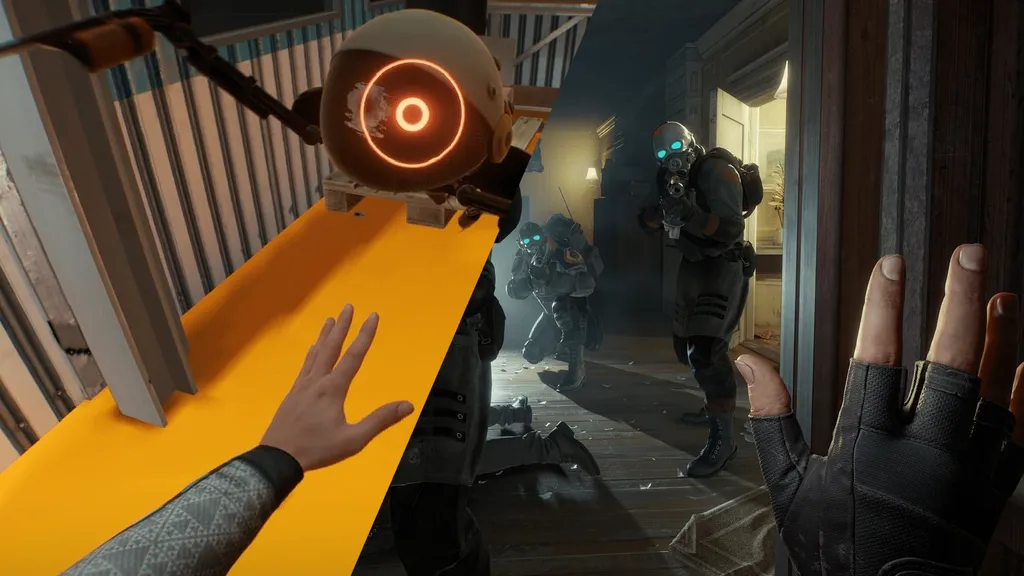Finally available to PC headsets owners everywhere, Half-Life: Alyx is a stunning interpretation of AAA VR. It’s as polished a spectacle you’ll find in the industry. But, despite what you might expect, it’s not a physics showcase comparable to, say, Boneworks.
Don’t get us wrong, Alyx is an impressive technical demonstration of physical interaction in VR. Littered surfaces can be realistically sifted through for items and heavy crates and barrels require two hands to be hoisted aside. But the game is completely devoid of melee combat; you can’t pick up any item and bring it crashing down on a zombie, nor can you use broken glass or knives to stab and there’s very little in the way of platforming-based puzzles that were strewn throughout Boneworks.
So why didn’t Valve pursue these ideas like others have? We put that to the team’s Jason Mitchell in an interview that will be published in full later this week. He pointed to one key limitation with current VR tech: force feedback.
“I think one of the things is the property of VR, right,” Mitchell said. “In Half-Life 2 of course, there was no expectation of force feedback. We were watching the Gravity Gun and then the physics took over and cool stuff happened, right? In Alyx if we have the player hold something large and rigid there’s a lot that’s gonna happen in a physical simulation that’s not gonna feed back into your hand.”
It’s true that sensations like weight and force are missing from current consumer VR headsets. Boneworks tried to workaround that issue by asking players to literally simulate the lifting and pushing of heavy items, acting out the motions slowly. It doesn’t sound like that was going to work for Valve.
“So basically you’re not going to have any kind of haptic feedback” Mitchell continued. “Don’t even worry about bludgeoning and impaling something; even something just as simple as tapping a tool on a desk or whatever. You don’t get the force feedback from that sort of thing. I think it’s just inherent in VR that we aren’t in the sci-fi future exoskeleton level of VR where every bit of our sensory input and output can be manipulated. So it’s not a strength of VR systems now, so we decided not to lean into it for that reason.”
We were definitely surprised to see Alyx rein its physics in, and felt like there was more the game could have done in this area. But the decision undoubtedly resulted in a tighter, more polished overall package.
What do you think? Do you wish Half-Life: Alyx had more elaborate physics-driven gameplay? Or were you happier with the cinematic finish? Let us know in the comments below!


























